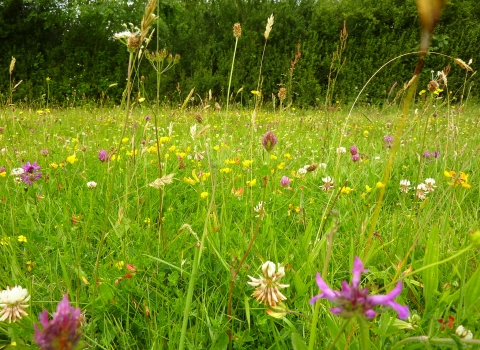Some of the most flower rich grasslands in Northamptonshire can be found alongside our country roads. With the decline of traditional hay meadows these verges contain some of our best remnants of species rich grasslands. They also provide important wildlife highways for species such as bees and butterflies. Historically most of our verges would have been covered in wildflowers such as knapweed, scabious and meadow vetchling, managed by grazing cattle and sheep by the local drovers as they moved between fields or to market. These practises are long gone and many verges have started to scrub over. So in 1997 the Wildlife Trust and County Council identified the best verges for the Protected Wildflower Verge Scheme (including 20 Local Wildlife Sites). These included calcareous grasslands supporting glow-worms and slow-worms, dry neutral grasslands with orange tip and meadow brown butterflies or wet grasslands with wildflowers such as purple loosestrife and insects like ruddy darter dragonflies.
This year we have been out surveying some of our best verge wildlife sites and working with the County Council and their contractors to improve their management. In Laxton we recorded an array of wildflowers including fragrant agrimony, wild marjoram and devil’s bit scabious and met a local man who identified the wildflowers with his children whilst picking the wild cherries that grow above. Whilst in Cotterstock we saw the knapweed broomrape that has been monitored by our keen volunteer Ioan Thomas for many years – 56 spikes this summer!
Inspired by the Wildlife Trust’s Scrub Off project, council staff and contractors have been keen to understand more about the verges and their wildlife. Together we did a survey in Bozeat looking for positive indicator species, such as ladies bedstraw and ox-eye daisy, and accompanied them testing out new kit which will cut and collect the verges growth at the end of the summer – mimicking a hay cut and preventing coarse grasses and scrub dominating. It’s been great to share our knowledge whilst appreciating these great sites and the future is looking bright for the Northants Wildflower verges.




